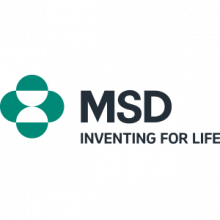The symptoms of Ulcerative colitis and Crohn's disease are quite similar and dependent on the location, extent, and activity of inflammation. In the early stages and mild activity of the disease, the first symptoms in the patient tend to be less significant for the suspicion of the disease (eg in Ulcerative colitis, the first symptoms are difficult to distinguish from other infectious intestinal inflammations).
The main problems that the patient complains of are abdominal pain (general or limited, convulsive or persistent), irregular bowel movements - from irregular thin stools with blood or mucus to severe diarrhea, frequent urge to stool, and a feeling of insufficient emptying after the stool. Other general symptoms are usually present in more severe forms of the disease, or if the inflammation affects large areas. These are: general fatigue, malaise, fever, anemia, weight loss. Some symptoms can also be caused by extraintestinal complications of the disease. Extraintestinal manifestations, especially in Crohn's disease, include arthritis, skin and eye combinations, as well as biliary tract diseases.
PROBLEMS IN EVERYDAY LIFE
After discussing the causes of the disease, its diagnosis, monitoring, and treatment, let us address the problems you are likely to encounter in everyday life.
One of the most important questions you will ask your doctor will be the further development of the disease and the problems that may arise in the future. The prognosis of the disease - as it is technically called - is very difficult to determine accurately in chronic inflammatory bowel disease. In an individual case, it will not be possible to draw a definitive conclusion unless the course of the disease has been monitored for several years. Both Crohn's disease and Ulcerative colitis are chronic diseases that you will have to live with for a long time. In both diseases, the flare-ups, when the disease is very active, tend to alternate with periods of rest (remission). If treatment has started at an early stage, inflammation activity can usually be kept under control and disease remission is achieved. Complications are more likely when the inflammatory process continues, as it may gradually change the structure of the intestine. For this reason, regular inspections are needed. To reduce the risk of complications, the flare-up phase must be diagnosed as soon as possible. Acute flares and complications of the disease, of course, will affect your daily activities and prevent you from fully enjoying life. Therefore, it usually pays off to deal with any mild side effects that may accompany long-term medication usage.
Authors: Prof.Dr.J. Scholmerich, Dr. P. Hoppe-Seyler, Prof. Dr. Martin Lausen
WHY DOES INFLAMMATION AFFECT OTHER ORGANS?
The fact why the inflammatory process also affects other organs, such as the joints, skin, or eyes, remains unclear. The cause may be an overreaction of the immune system against the infection or an autoimmune reaction directed against the body's own tissues. However, there is no conclusive evidence to support these assumptions yet.
The origin of chronic inflammatory bowel disease complications can be explained much more easily. Black blindness, hearing loss, loss of appetite, susceptibility to infections, hair loss, infertility (in men), growth disorders (in children), and certain skin problems are usually related to reduced absorption of certain vitamins and trace elements. Anemia can result from iron deficiency or blood loss through the gut. Reduced absorption of bile acids promotes the formation of gallstones, while kidney stones result from increased oxalate intake associated with increased intestinal fluid loss.
Serious complications of chronic inflammatory bowel disease, such as acute intestinal distension (enlargement of the large intestine - toxic megacolon) or perforation of the intestine, occur very rarely in both diseases. They result in inflammation of the peritoneum and obstruction or paralysis of the intestine (ileus). These are life-threatening conditions that must be addressed immediately in a hospital. Urgent surgery is usually required. Severe intestinal bleeding is more common in ulcerative colitis. Bowel narrowing (stenosis), caused by inflammation or scarring, and the formation of fistulas between the intestinal loops and other organs, are more common in Crohn's disease. These complications require treatment by a specialist (surgeon and internist).
Extraintestinal complications of chronic inflammatory bowel disease caused by impaired bowel function
Authors: Prof.Dr.J. Scholmerich, Dr. P. Hoppe-Seyler, Prof. Dr. Martin Lausen
CROHN 'S DISEASE IN CHILDREN AND YOUTH
Crohn's disease can manifest at any age and affect any part of the digestive tract. The disease most often manifests itself after the age of thirty and most often affects the end section of the small intestine and the initial section of the large intestine. Ulcerative colitis, which affects the large intestine, resp. the terminal part of the colon is manifested in 90% by bloody stools and about 70% by pain during emptying, so it is regularly rapidly observed and diagnosed. In contrast, Crohn's disease is manifested by very different, often non-specific symptoms, which are not immediately attributed to the digestive tract. Thus, the disease is often diagnosed with a significant delay. Because Crohn's disease was rarely observed in children 25 years ago and is still often misperceived as an adult disease, it is mentioned only occasionally in children and adolescents. It is almost a rule that the diagnosis is made many months after the observable symptoms are noticed. Knowledge of the disease possibility in children and knowledge of the clinical picture and simple initial examinations must be required of any doctor who comes into contact with children and young people. Crohn's disease in adults and children is basically the same. It is rare in infants and preschool age, but from the age of eight to ten, the number of patients increases significantly. This is continuously followed by a known increase in young adults. There are several important differences in symptoms, course, and treatment, which depend on the age at which the disease first manifested.
In the following text, we offer a comment about the clinical picture, diagnosis, and treatment of Crohn's disease in children and adolescents, which is based on our knowledge of approximately one hundred patients who have been in our care for more than 10 years. Important results, especially figures, come from the Crohn's study of the Society for Pediatric Gastroenterology and Nutrition in Austria with more than 500 patients.
Symptoms at the time of diagnosis: (anamnesis)
- 84% abdominal pain
- 80% weight loss
- 79% diarrhea
- 75% fatigue, decreased activity
- 57% loss of appetite
- 44% increased temperature, fever
- 36% bleeding (usually light)
- 35% growth delay
- 25% vomiting
Abdominal pain, not gaining weight or weight loss, and abnormal diarrhea are the most common symptoms reported by patients or their parents. They occur in about 4 out of 5 children with Crohn's disease. Other frequently described symptoms are fatigue, resp. decreased physical activity, loss of appetite, fever, gastrointestinal bleeding (often visible to the naked eye), growth delay, and vomiting. When only abdominal pain is present, it is needed to look for other symptoms. The establishment and completion of the height and weight curves should be natural for every pediatrician.
In particular, the combination of several cited non-specific disease symptoms may indicate Crohn's disease on time. Approximately half of the children with Crohn's disease weigh below the normal range at the time of diagnosis. Often, weight loss by young people, due to the demands on the figure, is welcome and is not perceived by the environment as a symptom of the disease. The fact that one-sixth of the subjects are below the limit of normal weight indicates a significant finding that the interval between the first symptoms and the diagnosis is often too long. With the increasing activity of the disease, (secondary) mental changes become significant: Anorexia nervosa is often a misdiagnosis. Roughly simplified, the following formula can be compiled:
Anorexia nervosa + decrease in red blood cells = Crohn's disease
The obvious paleness of the victim is often noticeable at first glance. The high percentage of changes in the anal area indicates the importance of investigating this area. Anal fissures in Crohn's disease are not usually painful, so these changes should be sought without patient mentioning. Many of our patients had "persistent anal fissures" or "chronic fistulas after abscess incision" for many years before diagnosis. In many cases, in patients with erythema nodosum, inflammatory bowel disease was immediately suspected after examination of the anal area. Especially with the rapid development of symptoms, the differential diagnosis of pressure pain in the right lower abdomen is important, mimicking the much more common appendicitis. Appendectomy ("appendix surgery") for "subacute" or chronic inflammation is the procedure that most often contributes to delaying the diagnosis of Crohn's disease.
On the contrary, pressure pain and residence in the right lower abdomen - eventually combined with thin stools or with erythema nodosum - does not necessarily mean Crohn's disease. Infectious causes should always be considered, resp. must be excluded. Laboratory tests are similar to those used in adults. The medical history, clinic, and laboratory tests will indicate that the possibility of inflammatory bowel disease is so unlikely that further invasive examinations can be omitted or so likely that examination of the entire gastrointestinal tract from mouth to rectum is indicated. This means external inspection of the oral cavity and anal area, endoscopic examination of the esophagus, stomach, and duodenum with biopsy sampling, X-ray examination of the small intestine by double contrast, also endoscopic examination of the entire colon, possibly terminal ileum, again with biopsy sampling. We routinely perform both endoscopies under full anesthesia in one day and the next day X-ray examination of the small intestine by double contrast.
Even if the patient is feeling well, regular check-ups are necessary. Many times, laboratory tests can detect flare-ups of the disease even before subjective difficulties point it out.
Surgery is always chosen only after the use of all other therapeutic options. Thus, on the one hand, the stenosis caused by the primary inflammation can also be successfully treated with medication, on the other hand, there can be a large growth lag, which manifests itself despite the appropriate treatment indicated to surgery.
In all therapeutic decisions in children, it is necessary to keep in mind not only the following weeks and months but especially the "next 70 years". Children, regularly monitored by a doctor, usually grow normally, if treatment is started before puberty, growth disorders can be completely eliminated. Therefore, the importance of early diagnosis needs to be emphasized once again. On the one hand, MC is a disease common enough for doctors to have enough knowledge about it, but on the other hand, it is rare enough to have enough experience with its treatment. We advocate that, if this disease is suspected, its diagnosis should be concentrated in several pediatric centers, and its subsequent treatment should be carried out in close cooperation with these centers. The diagnosis of MC puts patients and their loved ones in front of solving various problems. The prerequisite for managing them is to accept the disease as a fact and come to terms with it. Then it will be possible to successfully manage any sudden deterioration in health. All diagnostic and therapeutic measures must serve one goal - to provide the patient with an adequate quality of life.
Univ. Prof. Dr. Gerhard Granditsch

















